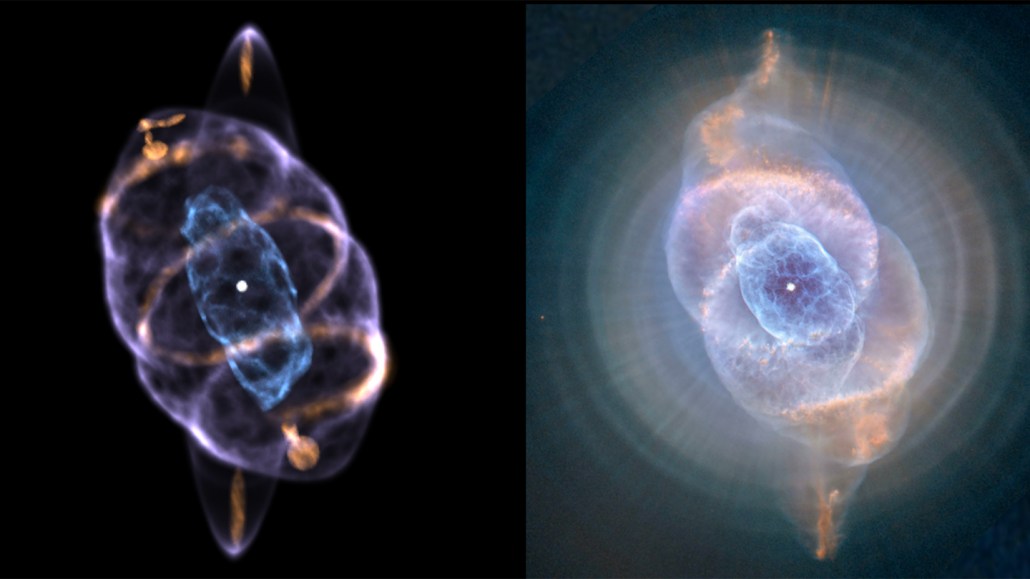A 3-D model of the Cat’s Eye nebula shows rings sculpted by jets
The curiosity of a high school student unraveled the nebula’s structure

A 3-D visualization of the Cat’s Eye nebula (left) reveals partial gas rings (yellow) as well knots and whorls on either side of the central gas bubble (blue), all of which were probably sculpted by jets erupting from the nebula's core. The visualization is based in part on an image (right) from the Hubble Space Telescope.
Visualization: R. Clairmont; Image: NASA, ESA, HEIC and The Hubble Heritage Team/STScI/AURA (CC BY-NC-SA 4.0)